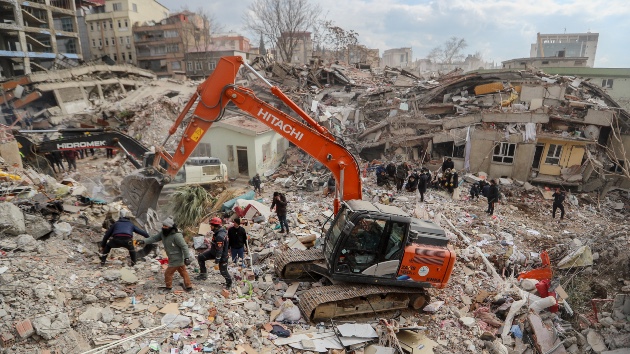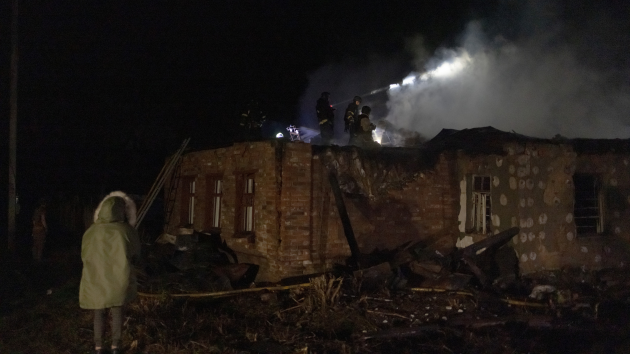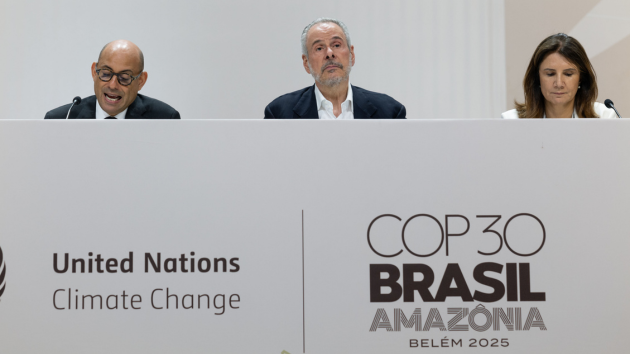‘Imagine every disaster movie’: ABC News’ Ian Pannell reports from Turkey earthquake zone
Written by ABC Audio ALL RIGHTS RESERVED on February 10, 2023

(NEW YORK) — ABC News Chief Foreign Correspondent Ian Pannell has been traveling throughout Turkey to some of the areas most devastated by the 7.8-magnitude earthquake that struck early Monday.
He spoke with ABC’s “Start Here,” about what he has seen so far.
START HERE: Ian joins us from the road, I believe. Where are you right now, Ian?
IAN PANNELL: We’ve kind of recently left Antakya, which has to be one of the hardest hit, small cities [and] large towns in the earthquake zone. And we’re kind of heading really through the earthquake zone in southeastern Turkey, up the coastline, heading towards Adana. But there are a number of towns and villages along the way, all of them showing the scars from this earthquake.
START HERE: And what are the hardest hit areas? Not just on the map, but what type of areas are you kind of coming across?
PANNELL: Antakya in particular seems to be very badly hit. And it’s a relatively poor but not terribly poor kind of town. It’s medium sized. It’s got a lot of hustle and bustle. It’s near the border with Syria. It’s a mixed population of Kurdish, Turkish [and] Arabic speaking. And it’s a town that I know really well because throughout our coverage of the Syrian civil war, this was our base. I mean, it was really our home. We stayed there for weeks and weeks at a time.
I got a message very early on, at the start when the news started coming, through this Turkish friend of mine. And she wrote very simply a message on my phone saying, “Ian, Antakya is gone.” And yesterday, we got to see for ourselves really the level of destruction.
Almost every single building has been either razed to the ground or is tumbling to one side like some ocean liner that’s starting to capsize. The images there are just truly, truly shocking. Imagine every disaster movie that you’ve ever seen. That’s exactly what it looks like. You’ve got rescue crews moving around the debris. The air is thick with this. Fine dust is coming from a lot of the buildings that they’re looking for survivors. But most of all, they’re pulling out bodies [and] putting them in body bags. We saw people with carts wheeling through the streets, with bodies on them, putting them into the trunks of cars [and] taking them straight to the cemetery to bury them. It’s an incredible scene there. You see people walking on the streets in tears, people dazed, people carrying what few possessions they managed to hold [and] looking for somewhere to bed down for the night. And a number of days into this disaster, what’s striking is that people still have nowhere to go. The level of assistance, the level of help is fairly low. Six-, seven-story buildings have been pancaked flat, and everywhere around you saw the grief, you saw the destruction, you saw death and you saw the devastation.
START HERE: What does the rescue effort look like? Because you were there essentially as people were still trying to grab each other out of the rubble.
PANNELL: Yeah, it varies a lot. There is a lot I think on the whole, a lot of it is very ad hoc. I mean, in some places it really is just extended family members getting hold of some kind of mechanical digger and using that and using their bare hands and whatever tools they can lay their hands on to try and clear some rubble away, to try and search for the bodies or search for survivors. The other places [are] a little more organized. There are professional teams who are used to searching through this kind of wreckage. Every now and again, a whistle is blown. Everyone is urged to go quiet while they listen. They use special listening devices to try and hear underneath the concrete to see if there is anyone there. And we’ve seen two very different scenarios in 48 hours.
One was a family. First, when we arrived, there were seven bodies swaddled in blankets laying on the floor, and there were people weeping [and] wailing over them, and then they started to search through the debris of the property for one 2-year-old child who was still missing. And after a number of hours, they located the bedroom of the child. And tragically, he was also dead. That was eight members of one family.
And then yesterday, a totally different scene who is much more professional. And the rescuers were able to locate a brother and a son who was still alive in the rubble. Again, suddenly there was this rush of the crowd. Someone shouted out, “There are survivors,” and everyone started running towards the site. After a number of hours, very painstaking, careful digging in very dangerous circumstances, they brought out two people who were injured, but that didn’t look too seriously injured.
A small ray of hope, this kind of keeping this rescue effort underway, but the reality is this is now less about rescue and more about recovery.
START HERE: Yeah, I was going to say, do you feel like you’re essentially there as this is teetering into we’re finding the last people we’re going to find?
PANNELL: Yes, I think so. Now you have to bear in mind, for religious reasons, people are trying to locate and bury the dead as quickly as possible so you don’t get any sense of a drop off in the urgency in trying to locate people. And of course, people do remain hopeful. And every now and again, you do see the odd miracles, if you like, but the truth is there are almost no miracles here. I’ve never been anywhere where you’re surrounded by so many bodies being pulled out, put into body bags or swaddled in a blanket and just put into the trunks of cars or put into the back of them and then taken straight to the cemetery, to be buried.
Everywhere around you, sometimes even just lying there on the road, almost full body bags. It’s difficult to keep up with the pace of need here. And the official figures, I have to say, the family that we met a couple of days ago, the eight people, there were no officials there counting how many people had come out [and] how many people were dead. And you have to ask yourself the question, “How realistic is that number?” As horrific as it is, I suspect the real number is higher. And I think everybody should brace themselves for it to become even higher again. The scale of destruction is so incredibly large, it’s hard to imagine that it isn’t going to double or triple the numbers that we were already looking at.
Copyright © 2023, ABC Audio. All rights reserved.

 KVSP
KVSP 



